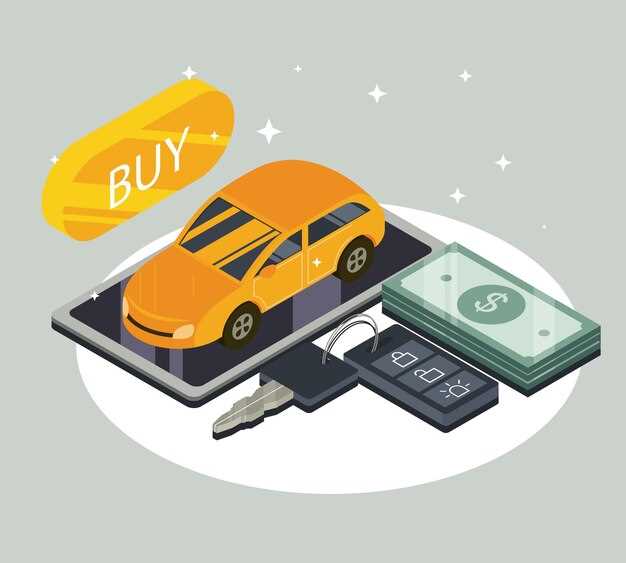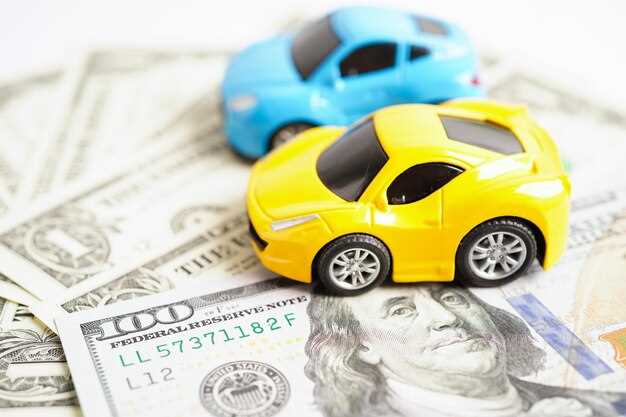
When considering the purchase of a vehicle, potential buyers often focus on the upfront price, but the true cost of ownership encompasses much more. This includes service and maintenance expenses that can vary dramatically between exotic and regular cars. Understanding these costs is crucial for making an informed decision that aligns with your financial situation and driving preferences.
Exotic cars, known for their performance and luxury, often come with hefty price tags not just for their purchase but also for their ongoing upkeep. Service intervals may be more frequent, and the parts required for repairs can be significantly more expensive. In contrast, regular cars typically offer more affordable maintenance options, access to a wider range of parts, and a larger network of service providers.
This article will delve into key aspects of cost comparison, including insurance rates, fuel efficiency, and the overall price of maintenance. By exploring these elements, we aim to provide a comprehensive understanding of how owning an exotic car stacks up against the more practical choice of regular vehicles.
Understanding Initial Purchase Price Differences
The initial purchase price is one of the most significant factors when comparing exotic and regular cars. Typically, exotic cars come with a high upfront cost due to their advanced engineering, limited production numbers, and luxurious materials. These vehicles often feature cutting-edge technology and performance capabilities that set them apart, resulting in prices that can easily reach six figures or more.
In contrast, regular cars are designed for mass production, which helps to keep their costs relatively low. Manufacturers can leverage economies of scale, producing large quantities of standard components that reduce the overall expense of each vehicle. As a result, the initial price of a regular car can vary widely, but it usually remains accessible to a broader audience.
It’s essential to consider that the initial purchase price doesn’t solely reflect the car’s brand or performance attributes. Exotic cars are often marketed as luxury items, which can inflate their cost further. These vehicles may also come with high demand, creating a dynamic where collectors are willing to pay a premium.
Moreover, while assessing costs, one should keep in mind maintenance expenses. Exotic cars often require specialized service, leading to higher maintenance costs over time. Regular vehicles typically have more readily available parts and services, contributing to lower long-term expenses. Understanding the interplay between initial purchase price and ongoing maintenance costs is crucial for potential buyers when making an informed decision.
Analyzing Routine Maintenance Expenses
When comparing the cost of ownership between exotic and regular cars, routine maintenance expenses play a crucial role. Regular maintenance encompasses a variety of services, such as oil changes, brake inspections, tire rotations, and fluid replacements, all of which are essential for the optimal performance and longevity of any vehicle.
For regular cars, maintenance costs typically remain manageable, often averaging between $200 to $400 annually. These vehicles benefit from a wider availability of parts and service providers, leading to competitive pricing and lower labor costs. Mechanics trained in servicing standard models are easily found, ensuring reasonable timeframes for repairs and routine checks.
In contrast, exotic cars present a different scenario. Routine maintenance for these high-performance vehicles can escalate significantly, frequently exceeding $1,000 per year. The parts required for service are often specialized or proprietary, resulting in higher prices and limited availability. Additionally, labor costs for exotic car services can be steep, as technicians must possess specific knowledge and experience to handle sophisticated systems.
Another factor influencing maintenance expenses is the frequency of service required for each class of vehicle. Exotic cars may need more frequent inspections due to their performance tuning, while regular vehicles adhere to standard service intervals. The higher mileage often associated with regular cars can lead to increased wear and tear, thus raising maintenance costs over time.
Ultimately, understanding the nuances of maintenance expenses between exotic and regular cars is essential for prospective owners. While regular cars offer lower routine service costs and ease of maintenance, exotic vehicles provide exceptional performance and luxury at a premium price. This assessment is vital for making informed decisions regarding ownership.
Insurance Costs for Exotic vs. Regular Cars

When considering the overall cost of ownership for vehicles, insurance costs play a significant role. Exotic cars and regular cars display markedly different insurance expenses due to various factors including their market value, risk profile, and maintenance costs.
Here are several key aspects that differentiate the insurance costs of exotic cars from those of regular vehicles:
- Market Value: Exotic cars typically have a much higher market value compared to regular cars. This elevated value directly translates to higher insurance premiums, as the cost to repair or replace these vehicles is significantly greater.
- Risk Factors: Insurers consider the risk associated with exotic cars, which are often driven at higher speeds. The higher likelihood of accidents or theft increases insurance rates compared to the more straightforward risk profiles of regular cars.
- Repair and Maintenance Costs: Exotic cars often require specialized parts and skilled labor for maintenance and repairs. Insurers factor these potential expenses into the premiums, making insurance for exotic cars more expensive.
- Driving Habits: Owners of exotic cars may be more inclined to engage in high-performance driving, increasing the risk of accidents. This heightened risk results in higher insurance prices.
It is important to note that insurance costs for regular cars can vary, but they generally remain more affordable due to:
- Lower Replacement Costs: Regular cars, being less expensive, tend to yield lower insurance premiums. Repairs are also less costly and more widely available.
- Wider Availability of Parts: Regular vehicles have parts that are easier to source, leading to lower maintenance and repair costs, which insurers consider in their pricing.
- Established Safety Ratings: Many regular vehicles benefit from established safety records, which can lower insurance costs as they are perceived as less risky to insure.
In conclusion, while exotic cars offer unparalleled performance and style, they come with significantly higher insurance costs influenced by factors such as market value, risk, and maintenance expenses. Regular cars, on the other hand, provide a more economical choice for insurance, making them a financially sound option for everyday drivers.
Long-Term Depreciation Rates and Their Impact
The long-term depreciation rates of exotic and regular cars significantly influence their overall cost of ownership. Depreciation is the reduction in a vehicle’s value over time, predominantly driven by factors such as mileage, age, condition, and brand perception. Understanding these rates is essential for potential buyers to make informed financial decisions.
Regular cars generally experience a more predictable depreciation curve. On average, a standard vehicle may lose around 15% to 20% of its value in the first year, with continued depreciation of about 10% to 15% annually for the subsequent years. This relatively stable decline means that owners can anticipate their car’s resale value more accurately, making budgeting for future costs, such as insurance and servicing, easier.
Conversely, exotic cars often exhibit a more volatile depreciation pattern. Initial depreciation can be steep, sometimes exceeding 25% in the first year. However, certain high-end models may stabilize or even appreciate due to rarity or brand prestige, depending on the demand in the luxury market. This unpredictability can complicate long-term financial planning and may lead to unexpected costs related to service and upkeep.
As a result, potential owners of exotic vehicles must carefully weigh the impact of depreciation against the enjoyment and status that such cars provide. The higher acquisition costs and ongoing service expenses must be managed alongside depreciation to assess the true financial implications. In contrast, regular cars usually allow for a more manageable ownership experience, as depreciation aligns more closely with expected financial outlay.
Ultimately, understanding long-term depreciation rates allows buyers to make better choices, ensuring that their investment aligns with both their financial goals and driving preferences.
Frequency and Types of Required Servicing
The frequency and types of servicing required for cars can vary significantly between exotic and regular vehicles. Understanding these differences is crucial for evaluating the overall cost of ownership.
Regular cars usually have a straightforward maintenance schedule that includes oil changes, tire rotations, and brake inspections. These services are typically needed every 5,000 to 7,500 miles, depending on the manufacturer’s recommendations. Routine maintenance on these vehicles can be budget-friendly, often ranging from $100 to $300 per visit.
In contrast, exotic cars demand a more rigorous and specialized servicing routine. Maintenance for these high-performance vehicles often requires specific expertise and parts, leading to higher costs. Services such as tracking system calibrations and specialized fluid replacements are common, necessitating visits every 3,000 to 5,000 miles. The average cost of maintenance for exotic cars can soar to $1,000 or more per visit.
| Type of Car | Typical Service Frequency | Common Services | Average Cost |
|---|---|---|---|
| Regular Cars | Every 5,000-7,500 miles | Oil change, Tire rotation, Brake inspection | $100 – $300 |
| Exotic Cars | Every 3,000-5,000 miles | Fluid replacement, System calibration, Brake system upgrades | $1,000+ |
Ultimately, the costs associated with maintenance not only take into account the frequency of services but also the complexity and quality of parts utilized. While regular cars offer a more manageable cost of ownership, exotic cars command a premium for their high-performance capabilities and intricate servicing needs.
Fuel Economy and Operational Costs Comparison

When comparing exotic and regular cars, fuel economy plays a crucial role in determining overall operational costs. Regular cars typically benefit from more economical engines, which translate into lower fuel consumption per mile. Many compact and mid-sized vehicles are designed with fuel efficiency in mind, often achieving impressive miles per gallon (MPG) figures. This design focus not only reduces the cost of gasoline but also lessens the environmental impact of daily driving.
On the other hand, exotic cars, while often high-performing and thrilling to drive, tend to consume significantly more fuel. Their powerful engines, built for speed and performance, can result in MPG figures that are substantially lower than those of regular vehicles. This can lead to higher fuel expenses, especially for drivers who cover long distances frequently.
Maintenance costs also vary greatly between these two categories. Regular cars often have lower maintenance requirements and costs due to their simpler mechanical systems and the availability of affordable parts. Regular service, such as oil changes and tire rotations, tends to be less frequent and less expensive, making ownership more approachable for the average driver.
Conversely, the maintenance of exotic cars can be significantly more expensive. Their specialized parts and the need for skilled technicians familiar with high-performance models often lead to higher bills. Routine maintenance tasks, such as brake inspections and fluid changes, can escalate quickly, adding to the operational costs. Additionally, the insurance premiums for exotic cars are usually higher, reflecting their expensive repair costs and potential risks associated with high-speed driving.
Overall, while exotic cars offer unparalleled performance and prestige, the cost of ownership–factoring in both fuel economy and maintenance–can be substantially higher compared to regular cars. For those seeking a more economical choice for daily driving, regular cars typically provide a more cost-effective solution, minimizing both fuel consumption and maintenance expenditures.
